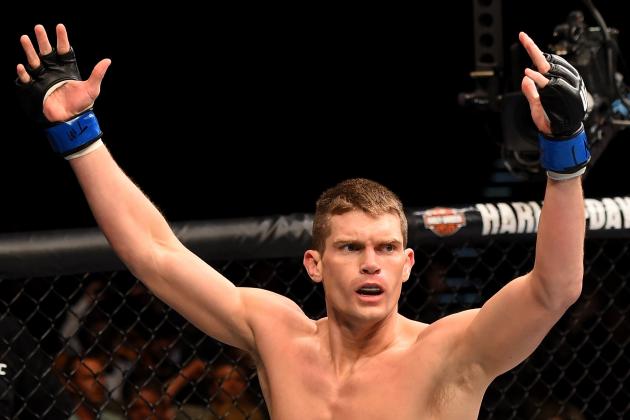Every time Stephen “Wonderboy” Thompson hit him on Saturday night, Johny Hendricks got a look on his face like, “Wait, what?”
Over the course of their three minutes and 31 seconds together, Hendricks’ face took on that look quite frequently. It's hard to blame him; we were all shocked.
Thompson’s funky punches and kicks came from all angles during the main event of UFC Fight Night 82, and he outlanded Hendricks 24-7 in significant strikes en route to a first-round TKO victory.
“I came out here to put on a good show,” Thompson (12-1 overall, 7-1 UFC) told play-by-play man Jon Anik in the cage when the fight was over. “Hopefully everyone was impressed … I didn’t look for the knockout, I just let it happen. Hopefully I’ll get that title shot, baby, that’s what I want.”
To say the win was eye-opening would be an understatement. In one fell swoop, Thompson extended his welterweight-best win streak to six fights, made his bones as a serious man in the Octagon and perhaps established himself as the surprise No. 1 contender in the 170-pound division.
More importantly, he might also have cemented the return of karate as a viable fighting style in the UFC.
The traditional martial arts have long gotten short shrift in modern MMA. The Gracie family sponsored early UFCs as glorified infomercials for their Brazilian jiu-jitsu fighting style and quickly proved their point—that a fighter had to know how to grapple to succeed in real-world hand-to-hand combat situations.
Their early dominance briskly undid many previously long-held conventions about how to fight. Simply put, the Gracies made a lot of traditional, stand-up-oriented martial artists look like fools. Even as the legendary family faded from prominence in MMA, practitioners of no-frills western systems like wrestling and kickboxing largely went on to dominate the next two decades.
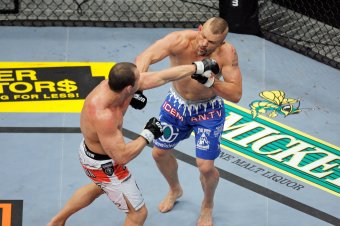
Classic movie-house forms were summarily overshadowed. A lot of professional fighters may well have started in karate, taekwondo or kung fu as kids, but few of them fought like it once they arrived in the Octagon.
Former light heavyweight champion Chuck Liddell—or at least his deltoid tattoo—claimed allegiance to kempo karate, but he fought like a brawling kickboxer when it mattered.
Welterweight kingpin Georges St-Pierre boasted a background in kyokushin, but he was known more for his dynamic wrestling during the heart of his UFC career.
Only light heavyweight titlist Lyoto Machida stood out for his classic karate fighting style—and his reign on top was so short it became a punch line. Machida’s elusiveness and counterstriking were always his calling card, but his patient, unorthodox methods sometimes seemed to work against him when judged according to MMA’s unified rules.
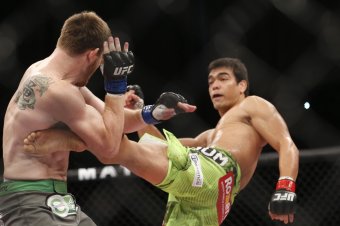
The Octagon forced fighting styles to evolve with unprecedented speed, and efficiency was at a premium. Techniques that were deemed outlandish or ineffective were quickly cast aside while less flashy but operational skills became the bedrock of modern MMA.
However, this latest—and arguably most unexpected—bend in the evolutionary road makes it seem as though some brands of traditional martial arts were dismissed too hastily. Without warning, our sport has perhaps crossed another generational threshold.
Suddenly, little by little, MMA appears to be headed back to the dojo. Methods that were once considered dead on arrival in the Octagon are experiencing a revival. The results can be breathtaking to watch, as Bleacher Report's Jonathan Snowden noted:
There's nothing more beautiful than a really fluid karate guy. I think Thompson exceeds even Machida when it comes to pure aesthetics.
— Jonathan Snowden (@JESnowden) February 7, 2016
Conor McGregor recently won the UFC featherweight title using a wide-open stance plucked straight from a 1970s grindhouse film.
Despite a recent loss, 19-year-old Sage Northcutt has become one of the UFC’s preferred young stars with his effortless front flips and his mashup of taekwondo and something called kajukenbo.
It’s also tempting to include Ronda Rousey in this group, as she cruised to the women’s bantamweight title primarily on judo throws and a single submission hold (the arm bar).
None of them are purely one-dimensional, of course, but they are all more entrenched in their base styles than many successful MMA fighters of the recent past.
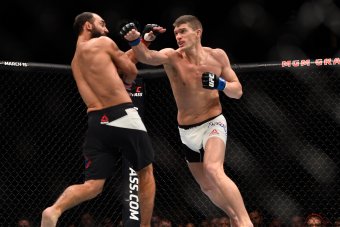
Now comes Thompson, who is as pure and impressive a karate man as we have ever seen.
The child prodigy started following his father to the gym at age three and began fighting in kickboxing and karate competitions at age 15. Martial arts were a Thompson family affair, and the tale he told Snowden this week made his journey sound more like a quest to claim his birthright than a way to target college scholarships or earn a career as a professional athlete:
We just grew up in it. There are football families, baseball families, basketball families. We're a karate family. We're a martial arts family. That's what we did. If we even hinted at wanting to do something else, it was like 'Nope.' This is it. This is what you're focusing on, and you're going to be great at it.
In certain ways—from his flashy striking style, to his fade haircut and Wonderboy nickname—Thompson is a throwback to bygone days. And yet he is also part of a meticulously cross-trained next generation. His brother-in-law is BJJ legend Carlos Machado, and these days he prepares for MMA bouts alongside former middleweight champion Chris Weidman.
Thompson's performance on Saturday drew rave reviews from his training partner:
What!!!!! My brother @WonderboyMMA is a beast !
— Chris Weidman (@ChrisWeidmanUFC) February 7, 2016
Still, it begs mentioning that Thompson’s traditional martial arts upbringing made him the exact opposite of a guy like Hendricks. The former welterweight champion was forged by a much more common (and western) lifestyle, going from high school wrestler to All-American at Oklahoma State University before transitioning to MMA.
And maybe those differences were to blame for our hesitance to take Thompson seriously leading up to this bout. Even though he’d already won five in a row—including a highlight-reel spinning-hook-kick knockout of Jake Ellenberger last July—he entered this weekend as nearly a 2-1 underdog, according to Odds Shark.
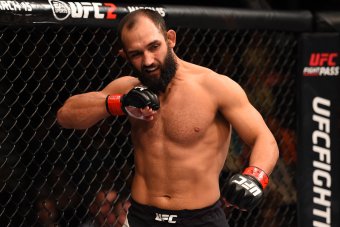
Hendricks was the more proven commodity, and maybe some of that anti-karate bias still kicked around in the back of our minds. We’ve had 20 years to convince ourselves that stuff doesn’t work in MMA, after all.
If that was the prevailing mindset, though, Thompson single-handedly did a lot to undo our prejudices.
He battered Hendricks from start to finish. From the moment he threw a jumping kick during the fight’s first 15 seconds, his speed advantage was evident.
He disrupted Hendricks’ plan to wrestle with a continual barrage of long-range strikes from his karate stance. With one minute and 30 seconds gone, Thompson landed a side kick to the body and immediately followed it up with a side kick to the head—and Hendricks made that face for the first time.
Wait, what?
Many of us who’d anticipated a quick-and-easy win for the Oklahoma native likely had the same expression. This didn’t go at all how we expected.
The end began for Hendricks when Thompson blasted him with a right hand with 1:45 left in the opening stanza. Thompson followed it up with a series of strikes against the fence—including one kick that appeared to stray low. There was a spinning kick mixed in there and then another series of punches before Hendricks collapsed against the chain link, prompting referee John McCarthy to call a stop to the action.
Every technique Thompson threw on the feet was picture-perfect. It’s clear now that the sheer diversity of his stand-up attack, his speed and power make him a threat to anyone in the welterweight division, including strike-friendly champion Robbie Lawler.
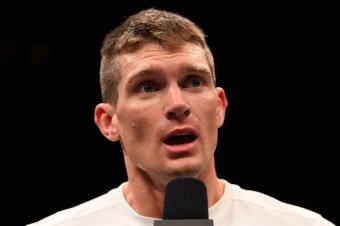
Thompson’s most important accomplishment in this fight, however, was warding off Hendricks’ only takedown attempt during the first minute. His defensive wrestling appears to have improved greatly since his loss to Matt Brown in April 2012.
Perhaps that wrinkle underscores the most significant difference between the new breed of traditional martial artist and the generation we saw undone in MMA during the early 1990s.
Not only are Thompson and those of his ilk incredible athletes who have been impeccably trained from the time they could walk—they also understand the need to possess well-rounded skills.
Today’s martial artist simply has more information than the fighters of two decades ago.
They understand that the grappling game is vital for success in mixed combat sports. It’s their ability to stay on the feet in the first place that allows them to bring these age-old—and previously discredited—striking techniques to bear.
And if Thompson can stay off his back in future MMA fights, there’s a good chance the karate master will leave his opponents with that same confused and painful look on their faces.
